 What Are The Signs of A Collapsed Drain
What Are The Signs of A Collapsed Drain
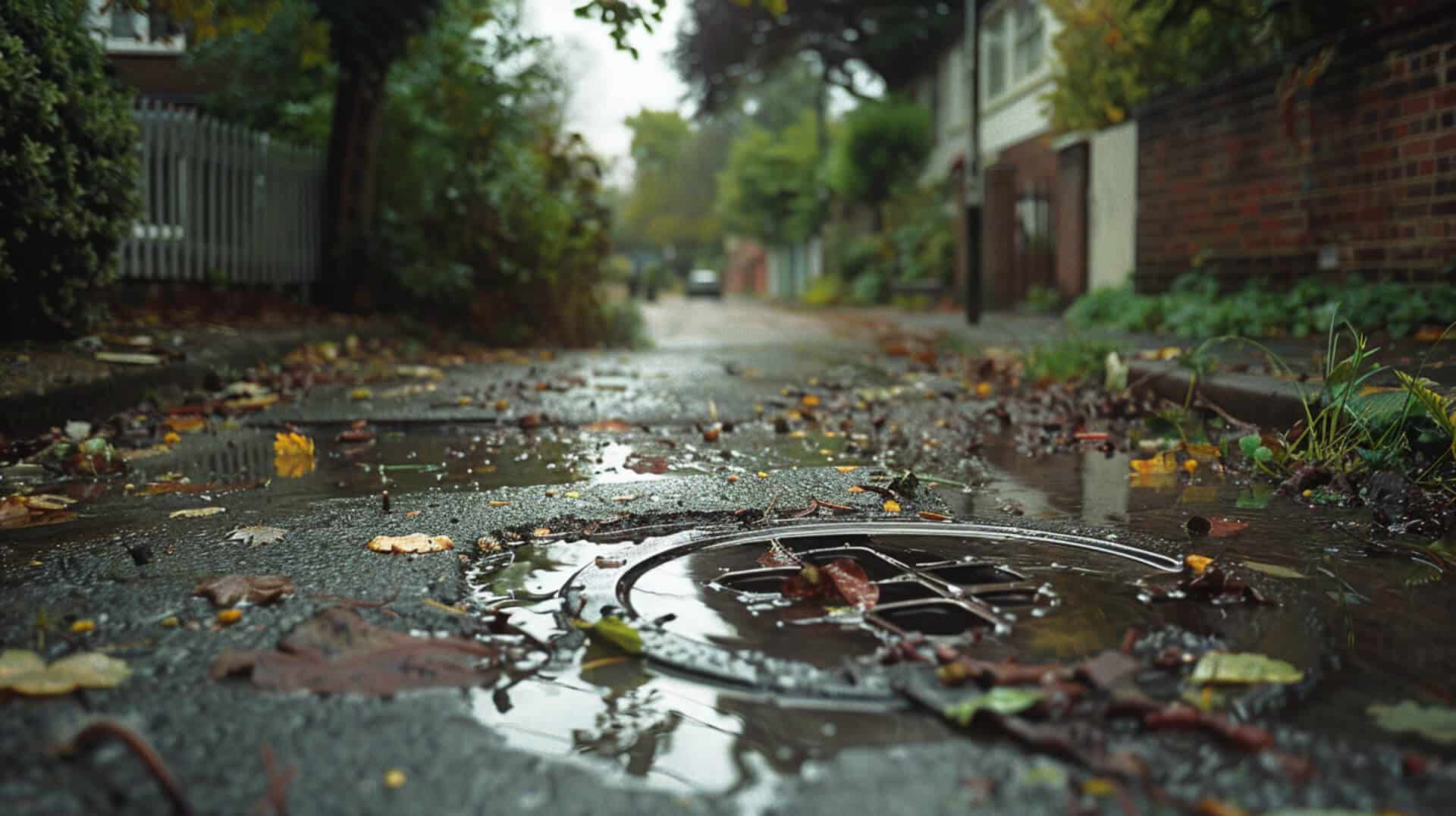
A healthy drainage system is fundamental to the structural integrity of any property. It ensures that wastewater and rainwater are efficiently removed, preventing potential damage and maintaining a safe environment for occupants. However, various factors can compromise this vital system, leading to significant issues that may not be immediately apparent.
What Constitutes a Healthy Drainage System?
A healthy drainage system operates seamlessly, with water flowing freely through pipes and channels without any blockages or backups. It should be free of cracks, obstructions, and any signs of wear that could impede its function. Regular maintenance is key to preserving the system’s health and preventing minor issues from escalating into major problems.
The Crucial Nature of Drainage System Integrity
Maintaining the integrity of your drainage system is not just a matter of property upkeep; it is essential for preventing water damage, which can lead to costly repairs and even health hazards such as mould growth. A well-maintained system also contributes to the overall sanitation of your environment, keeping it free from sewage-related issues.
Environmental Factors and Neglect Leading to Collapse
Environmental pressures, such as tree root intrusion or freezing temperatures, can cause significant damage over time. Neglect, such as failing to clear debris or ignoring minor leaks, can exacerbate these issues, leading to a weakened system that’s prone to collapse.
Common Locations of Drainage System Failures
Most drainage system failures occur within property boundaries, often in areas that are out of sight, such as underground pipes or within walls. These failures can manifest as persistent blockages, unusual odours, or even visible damage to the property’s foundation or landscaping.
By understanding what constitutes a healthy drainage system and the importance of maintaining it, property owners can take proactive steps to prevent system collapse and ensure the longevity and safety of their property.
Identifying the Primary Causes of Drainage System Collapse
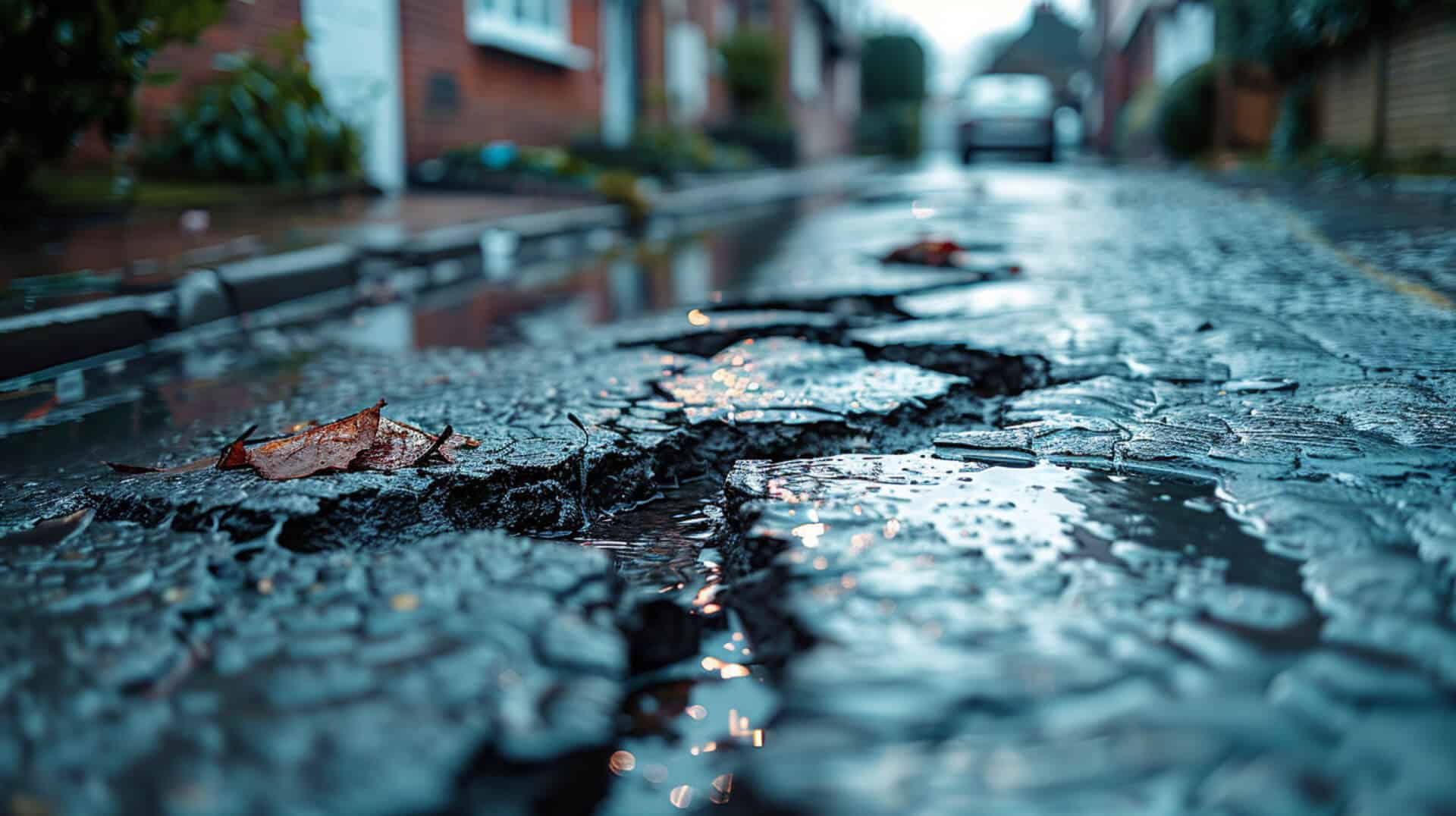
Understanding the primary causes of drainage system collapse is essential for property owners, business owners, and facility managers. Recognising these factors not only aids in identifying current issues but also serves as a preventive measure against potential future collapses.
Environmental Pressures
One of the leading contributors to drainage system failure is environmental pressure. This includes the intrusion of tree roots seeking moisture, which can invade and damage pipes. Additionally, extreme weather conditions, such as freezing temperatures, can cause pipes to crack and break.
Structural Damages and Ground Movements
Structural damage to drainage systems can occur from various sources, including heavy vehicle traffic over the area where pipes are laid or construction work that compromises the system’s integrity. Ground movement, whether due to natural settling or events like earthquakes, can also lead to misalignment or fractures in the pipes.
Importance of Understanding Causes
By understanding these primary causes, you can take proactive steps to mitigate risks. For instance, regular inspections can detect early signs of tree root intrusion, and measures can be taken to reinforce the structural integrity of the system in high-traffic areas.
Preventive Measures
Preventive measures should be initiated as part of routine property maintenance. This includes scheduling regular inspections, especially after severe weather events, and consulting with professionals when any changes in the ground or traffic patterns near the drainage system are anticipated.
Recognising Secondary Causes and Their Impact on Drainage Systems
Secondary causes of drainage system collapse can be as detrimental as primary causes. Understanding these factors is crucial for maintaining a functional drainage system.
The Consequences of Poor Maintenance
Neglecting regular maintenance can lead to severe drainage system issues. Without routine checks, minor problems can escalate, resulting in blockages or even total system failure. It is imperative to conduct periodic inspections and cleanings to ensure the system remains clear of obstructions.
Ageing Infrastructure and Drainage Collapse
As drainage systems age, they become more susceptible to collapse. Corrosion, material degradation, and outdated design can all contribute to the failure of these systems. It is important to assess the condition of older systems and consider upgrades or replacements where necessary.
Blockages and Overflow Concerns
Blockages, often caused by inappropriate items being disposed of down the drain, can lead to significant overflow issues. Property managers should ensure that all users of the drainage system are aware of what can and cannot be safely disposed of in this manner.
Unhygienic Conditions and Drainage Problems
Unhygienic conditions, such as the buildup of grease or waste, can exacerbate drainage problems. These conditions not only lead to unpleasant odours and potential health hazards but can also contribute to the deterioration of the system’s components.
By addressing these secondary causes, you can significantly reduce the risk of a drainage system collapse and maintain a safe and healthy environment.
Visible Signs of a Collapsed Drain
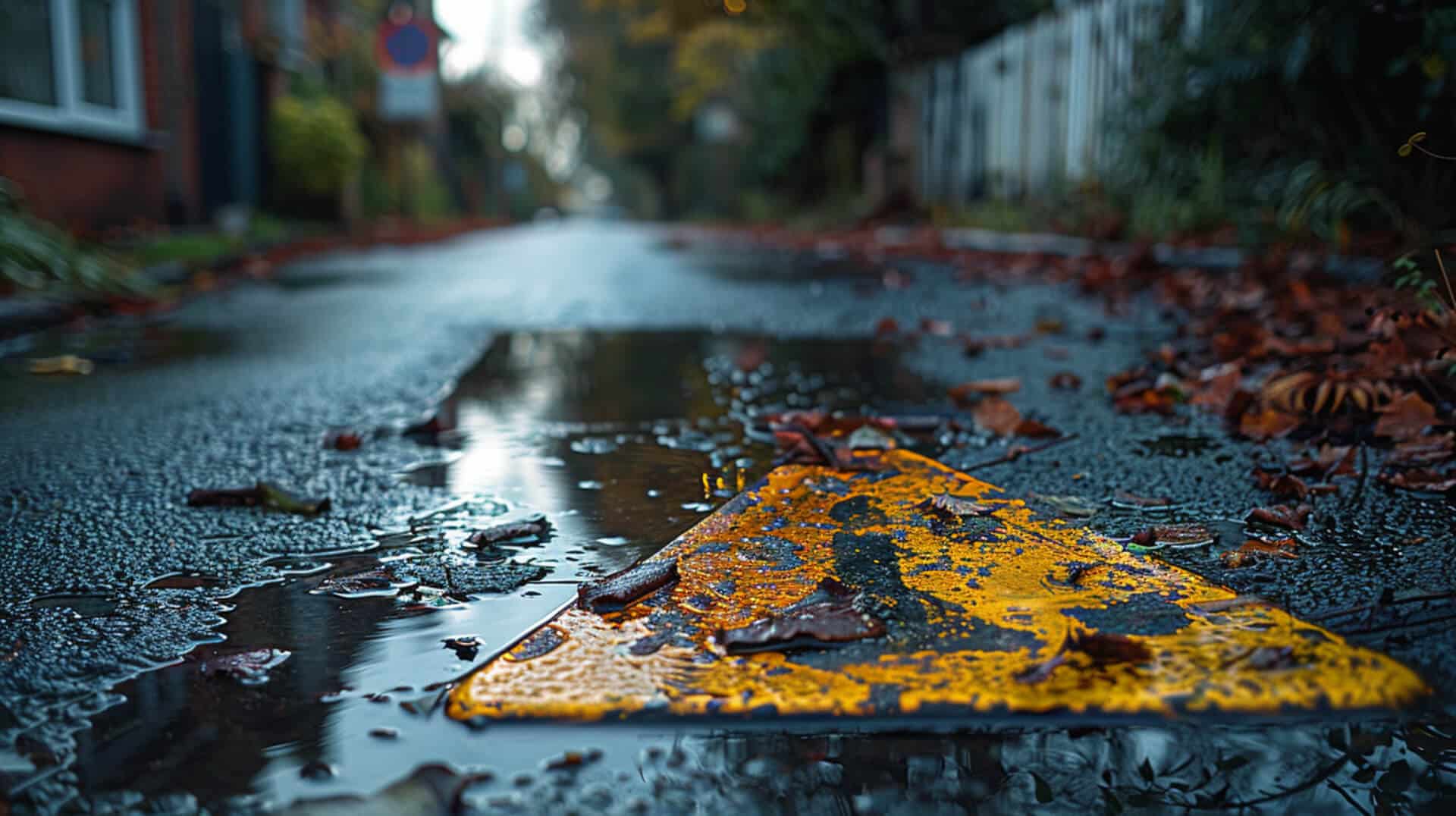
Recognising the signs of a collapsed drain is critical for timely intervention and repair. Here are the key indicators that may suggest a drainage system has failed or is at risk of failure.
Persistent Blockages and Sewage Odour
Persistent blockages are a primary sign of a compromised drainage system. If you frequently encounter clogs that resist standard clearing methods, it may indicate a more severe issue. Accompanying these blockages, a noticeable sewage odour inside or outside the property often points to a failure in the system, suggesting that waste is not being properly transported away from the area.
Rodent Infestations and Damp Patches
An increase in rodent activity can be a symptom of drainage problems, as these pests are attracted to the sewage and can travel through damaged pipes. Similarly, damp patches on walls or floors, especially when combined with mould, can signal a leak or break in the system, as moisture escapes into the surrounding materials.
Unusual Grass Growth and Structural Damage
Areas of unusually lush grass growth near drainage lines may indicate a sewage leak, providing extra nutrients to the soil. Additionally, visible structural damage, such as cracks in walls or a sinking ground, can be the result of underlying drainage issues that require immediate attention.
By staying vigilant for these signs, you can address drainage problems before they escalate into more significant and costly repairs.
Financial Implications of Drainage System Failure
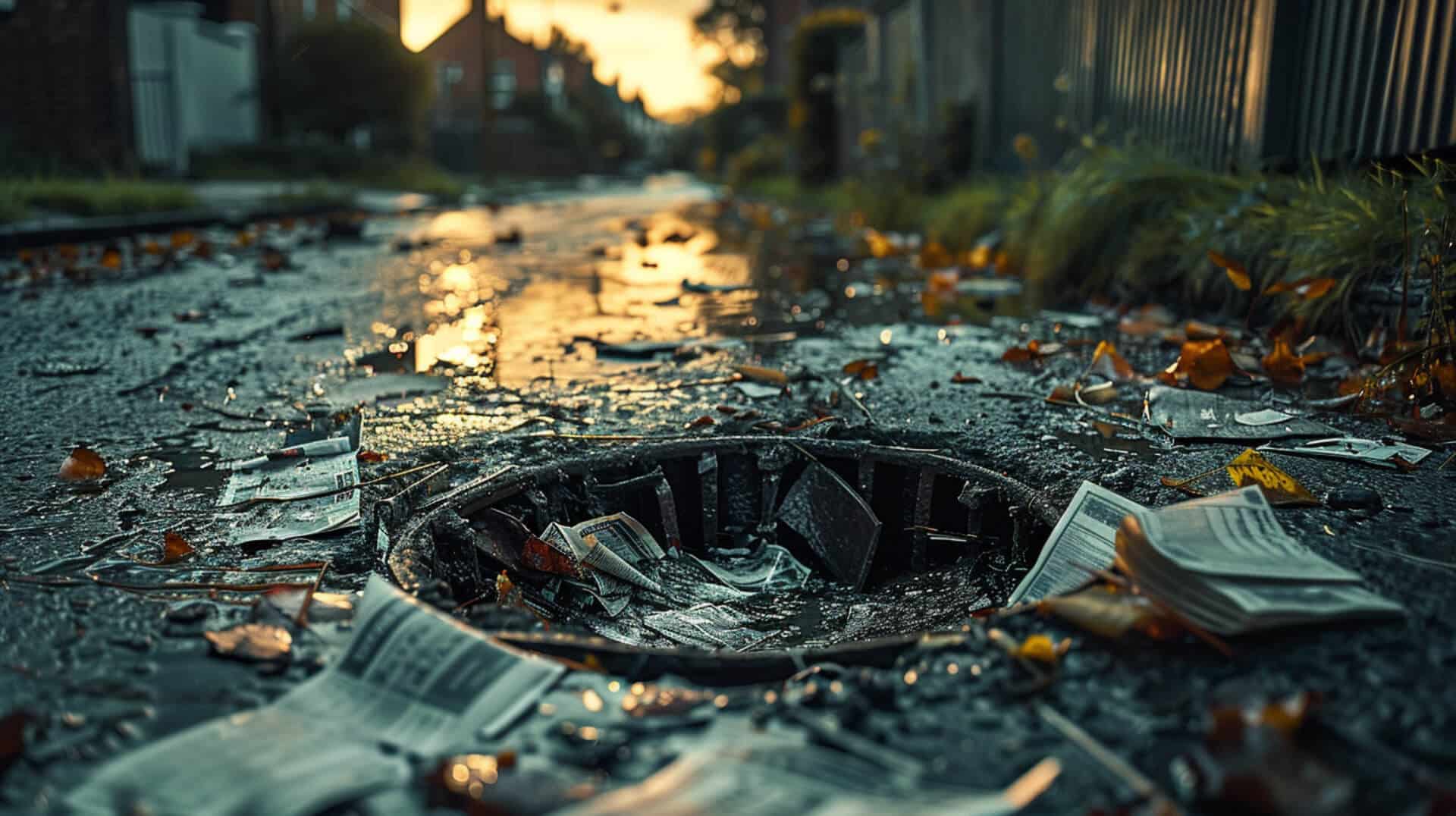
Addressing a collapsed drain can be a significant financial undertaking. It is important for property owners to understand the potential costs and insurance variables involved in repairing a drainage system.
Understanding Repair Costs
The cost of repairing a collapsed drain can vary widely. Factors that influence the expense include the extent of the damage, the size of the property, and the repair method chosen. For instance, trenchless repairs might be less invasive and therefore less costly than traditional excavation methods.
Navigating Insurance Coverage
Insurance coverage for drainage system repairs can differ based on the policy and the cause of the damage. It is crucial to review your insurance policy to determine if it includes accidental damage or collapsed drain coverage. Some policies may not cover damages deemed to result from negligence or lack of maintenance.
The Value of Preventative Maintenance
Preventative maintenance is not only essential for the longevity of your drainage system but also serves as a cost-saving measure. Regular checks can prevent small issues from escalating into larger, more expensive problems. Investing in routine maintenance can ultimately save money by avoiding the high costs associated with major repairs.
Consulting with Professionals
When facing a potential drainage system failure, it is advisable to consult with professional estimators, such as those with MRICS or MCIOB accreditation. They can provide accurate cost estimates for repairs, helping you make informed financial decisions regarding your property’s drainage system.
The Role of Professional Services in Diagnosing and Repairing Collapsed Drains
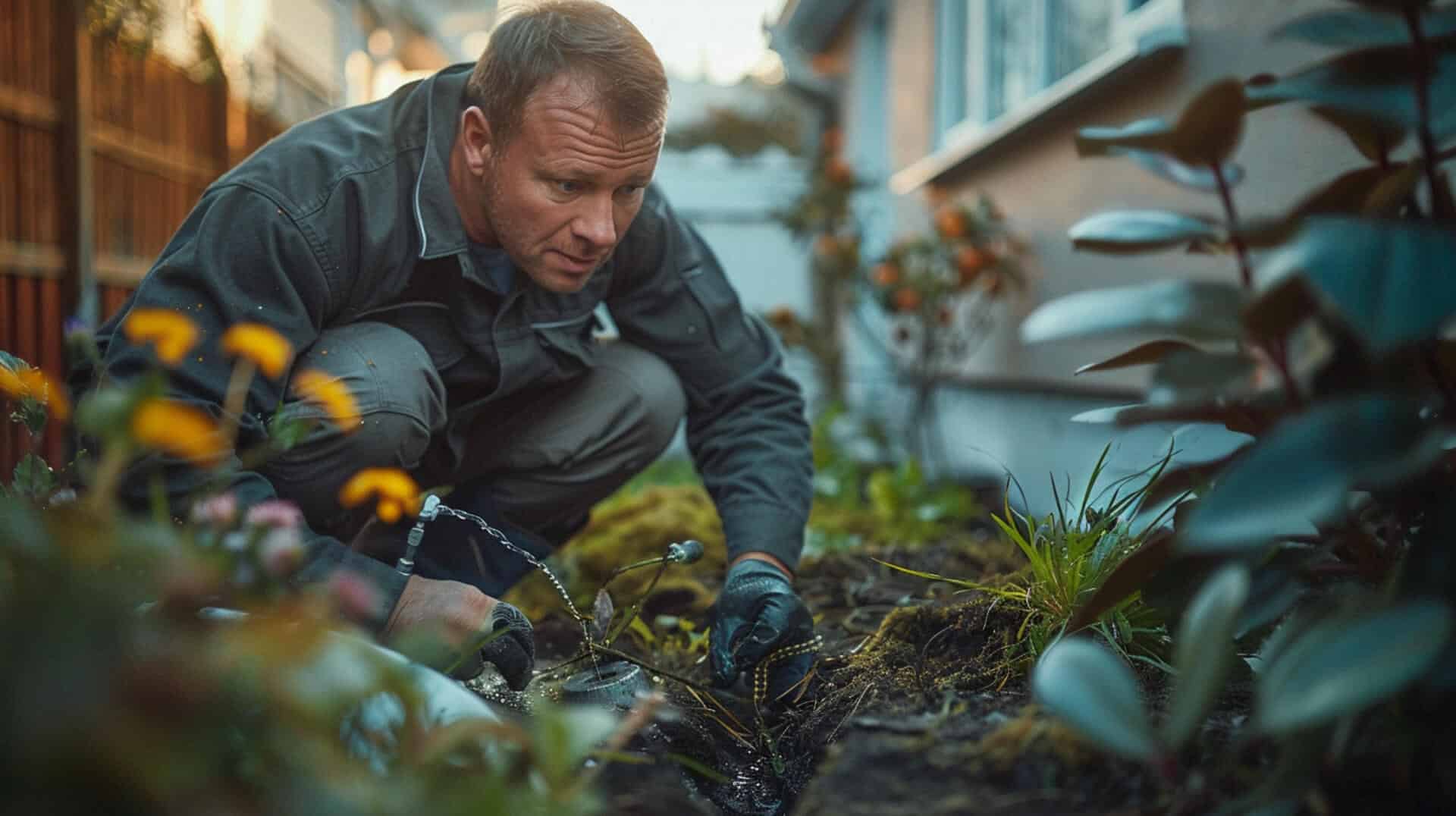
When faced with the signs of a collapsed drain, it is often necessary to engage professional services to accurately diagnose and effectively repair the issue.
Diagnostic Tools Used by Professionals
Professionals utilise a variety of diagnostic tools to identify collapsed drains. One of the most effective methods is a CCTV drain survey, which provides a visual inspection of the interior of drainage pipes. This non-invasive technique allows professionals to pinpoint the location and extent of the damage without excavation.
Trenchless Technology and Pipe Replacement
For repairs, trenchless technology offers a less disruptive alternative to traditional methods. Techniques such as pipe bursting and relining allow for the repair or replacement of damaged pipes without extensive digging. This method is not only quicker but also minimises damage to the surrounding property.
Importance of Regular Maintenance and Pest Control
Regular maintenance, including routine inspections and cleaning, is essential in preventing drainage system collapse. Pest control is also a critical component, as infestations can indicate or cause damage to the system. Professionals can offer advice on maintenance schedules and pest deterrents.
Seeking Professional Services
Professional services should be sought when:
– Persistent issues, such as blockages or odours, cannot be resolved with standard methods.
– Visible signs of damage, like structural cracks or sinking ground, are present.
– Regular maintenance has been neglected, leading to concerns about the system’s integrity.
By addressing these concerns promptly with professional assistance, you can ensure the longevity and functionality of your drainage system.
Understanding Owner and Water Supplier Responsibilities
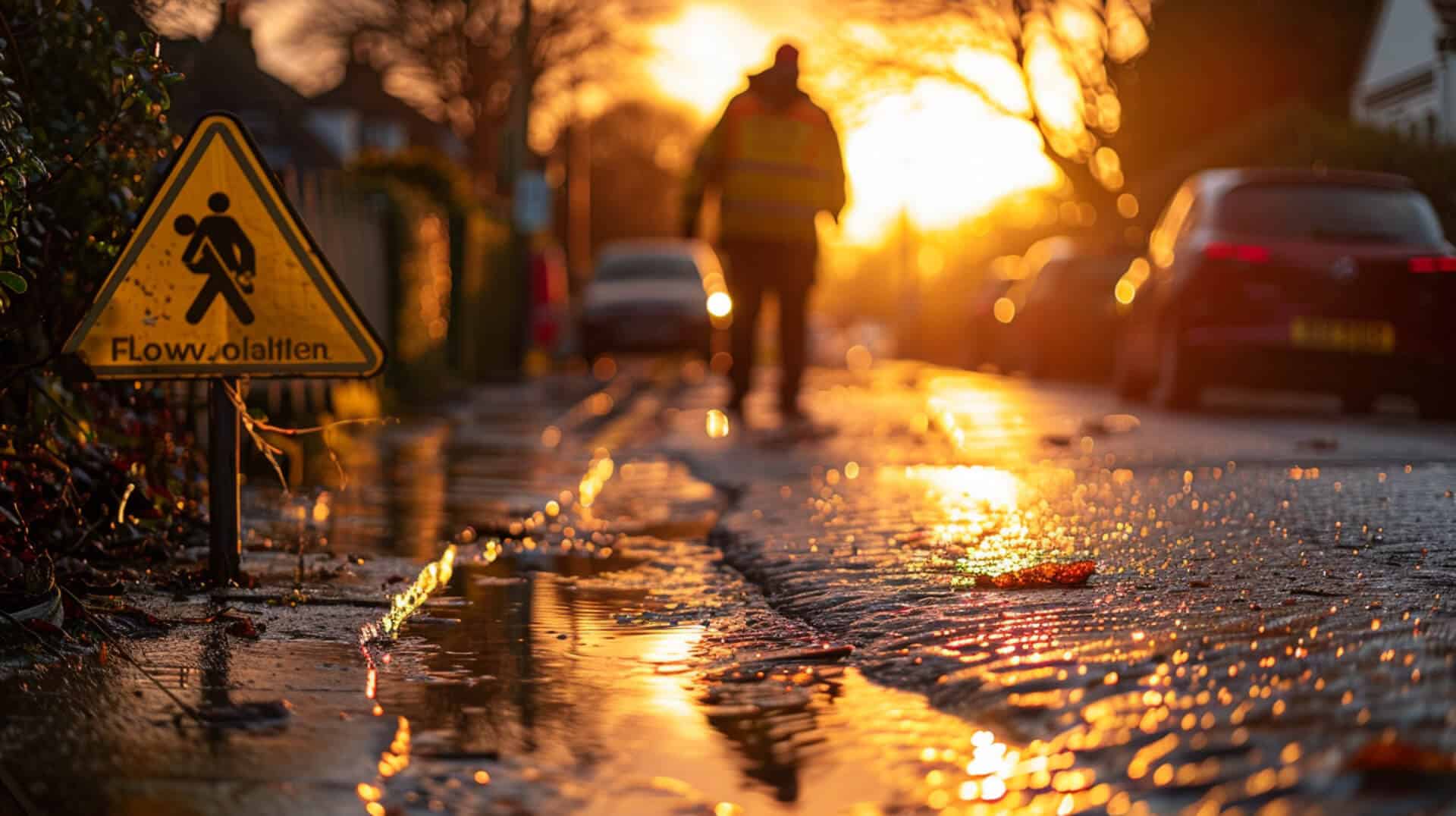
Navigating the division of responsibilities for drainage system maintenance is crucial for property owners. Knowing who is accountable for what aspects of the drainage system can help in addressing issues efficiently and effectively.
Property Owner’s Maintenance Responsibilities
As a property owner, your responsibilities typically include maintaining the drainage system within your property boundaries. This encompasses regular inspections, addressing immediate repair needs, and ensuring the system is free from blockages and other preventable issues. Prompt action on signs of potential collapse, such as persistent blockages or sewage odours, is essential to mitigate damage.
Water Supplier’s Extended Responsibilities
Beyond your property boundaries, the water supplier is generally responsible for the larger shared drainage systems. This includes the main sewer lines that collect wastewater from multiple properties. If you suspect a problem that extends beyond your property, such as a blockage in the main sewer, contacting your water supplier is the appropriate course of action.
Collaboration on Shared Systems
Collaboration between property owners and water suppliers is necessary when dealing with shared drainage systems. If issues arise that affect the larger network, it is important to work together to resolve them promptly. This ensures the continued functionality and health of the overall drainage infrastructure.
Legal and Safety Considerations in Drainage System Management
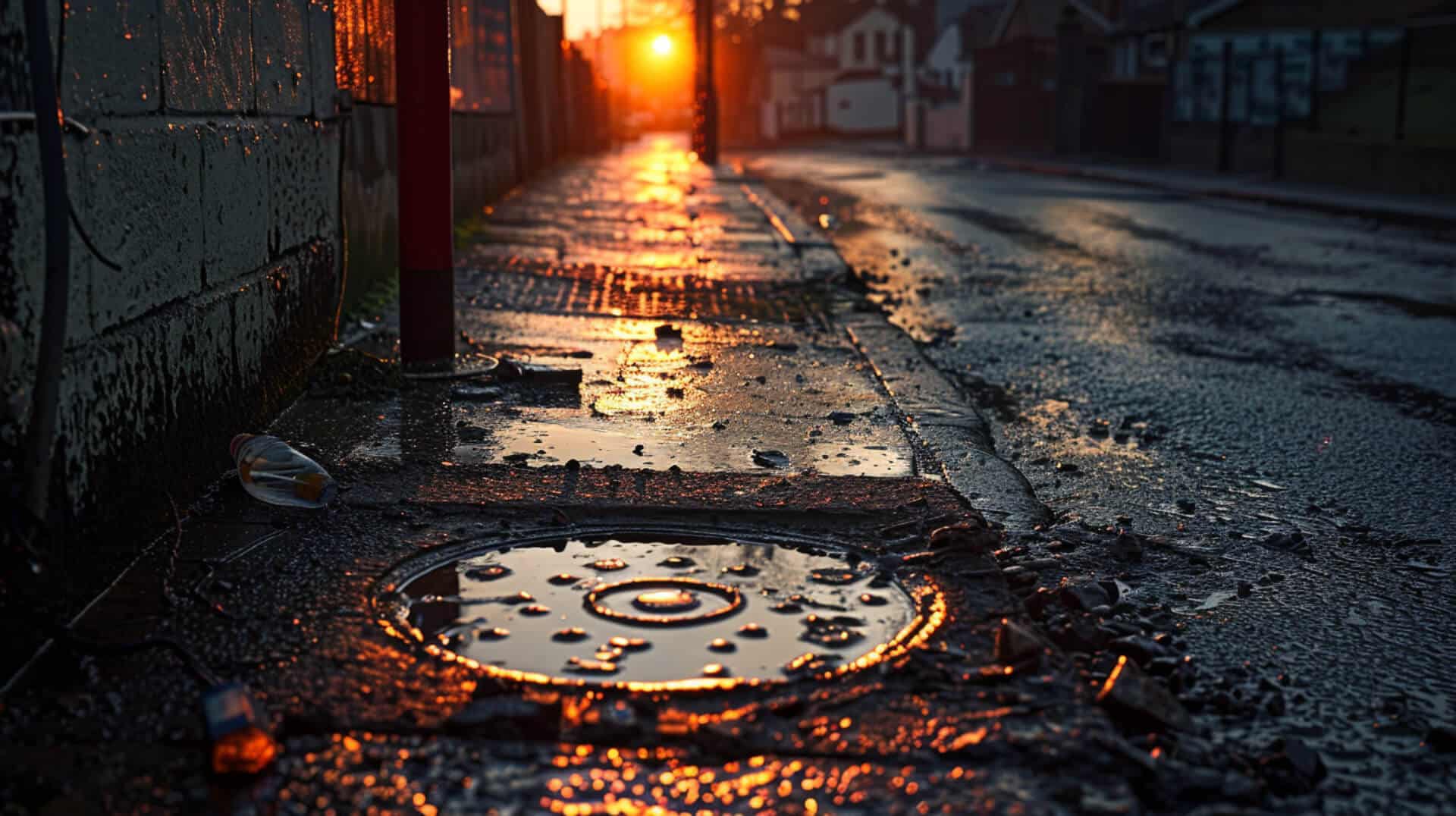
When managing a drainage system, it is important to be aware of the legal and safety considerations to ensure compliance and protect all parties involved.
Required Legal Permissions for Drainage Work
Before undertaking extensive drainage work, especially that which extends beyond your property boundaries, it is necessary to obtain the appropriate legal permissions. This may include local council approvals or permits, particularly if the work could impact public sewer systems or the property of others.
Approaching DIY Repairs Safely
For property owners considering DIY repairs, safety must be the top priority. It is essential to use the correct safety equipment and follow established procedures to prevent accidents. If you are unsure about any aspect of the repair process, it is advisable to consult with professionals to avoid potential hazards.
The Importance of Professional Vetting
Ensuring quality repairs often requires the expertise of vetted professionals. Credentials such as Checkatrade endorsements provide reassurance of a tradesperson’s reliability and adherence to industry standards. Professional vetting is not only about ensuring quality workmanship but also about guaranteeing that repairs comply with current regulations.
Prioritising Safety in Drainage Management
Safety considerations become paramount when there is a risk of structural damage, health hazards from sewage exposure, or when using heavy equipment. In such situations, professional services are not only recommended but may be necessary to manage these risks effectively.
Environmental Considerations in Managing Drainage Systems
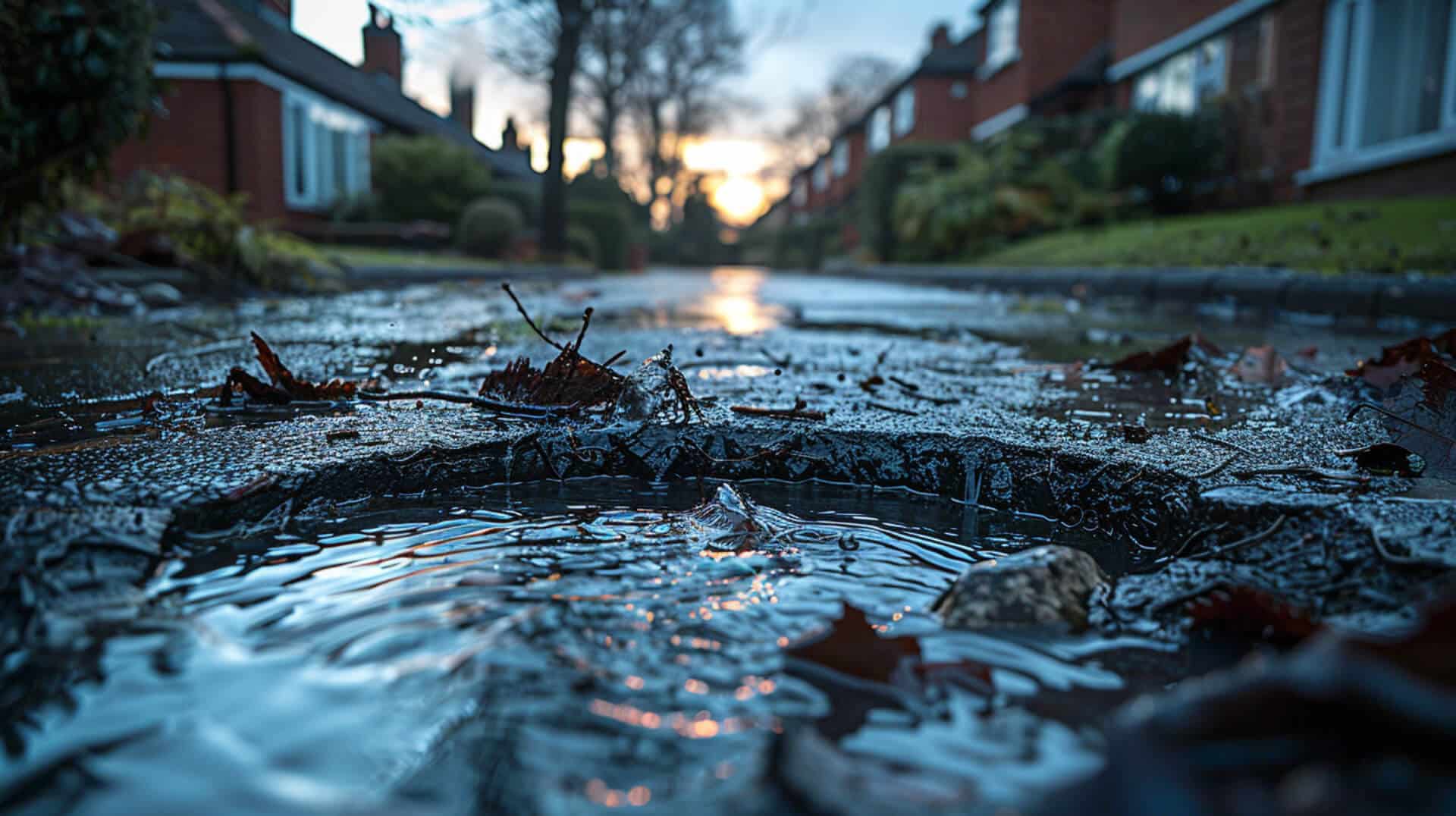
Environmental factors play a significant role in the health of drainage systems. Understanding how these elements interact with infrastructure is key to maintaining system integrity and preventing collapses.
Impact of Tree Roots and Ground Movement
Tree roots can intrude into drainage pipes, causing blockages or even structural damage. Ground movement, whether from natural shifts or human activity, can also affect the alignment and integrity of underground pipes. These factors necessitate regular inspections to identify potential issues before they escalate.
Adapting to Environmental Changes
Adaptation measures include installing root barriers to protect pipes from tree root intrusion and reinforcing pipe structures in areas prone to ground movement. It is also advisable to consider the local climate, as areas with freezing temperatures may require pipes that can withstand the expansion and contraction caused by temperature fluctuations.
Importance of Environmental Impact Consideration
Considering the environmental impact of drainage management helps in making informed decisions that not only protect your property but also contribute to the sustainability of the local ecosystem. This includes choosing materials and repair methods that minimise environmental disruption.
Implementing Wear and Tear Mitigation Strategies
Property owners should implement wear and tear mitigation strategies as part of their regular maintenance routine. This includes using durable materials for repairs, ensuring proper installation to prevent future damage, and scheduling regular maintenance checks to address any environmental wear before it leads to system failure.
Future-Proofing Strategies for Drainage Systems
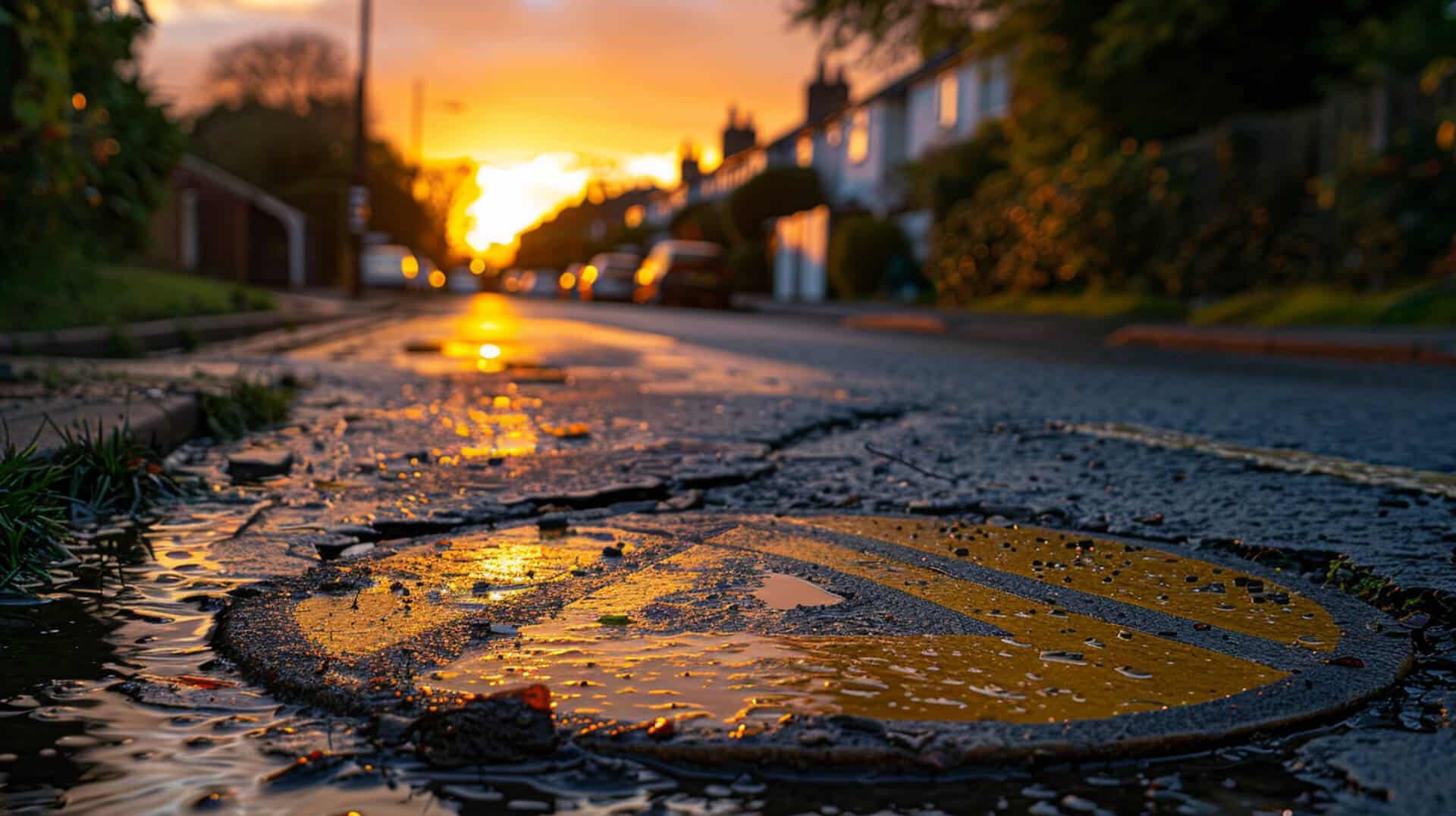
To ensure the longevity and reliability of drainage systems, property owners must adopt a proactive approach to maintenance and usage.
Establishing Regular Maintenance Schedules
Regular maintenance is the cornerstone of a healthy drainage system. Property owners should establish and adhere to a schedule that includes routine inspections and cleanings. This can help identify potential issues before they escalate into significant problems.
Mindful Drain Usage
Mindful usage of drains is critical in preventing blockages and collapses. Property owners should educate all users on what should not be disposed of down the drains, such as oils, fats, and non-biodegradable materials, to avoid clogs that can lead to system failure.
Updating Ageing Infrastructure
Infrastructure updates are essential for systems that are nearing the end of their service life. Replacing old pipes with newer, more durable materials can prevent frequent failures and ensure the system can handle current and future demands.
Reassessing Future-Proofing Strategies
Property owners should periodically reassess their drainage systems, especially after environmental changes or significant weather events. This reassessment helps in adapting the maintenance and usage strategies to the current conditions of the system and its surroundings.
Leveraging Community and Online Support for Drainage Issues
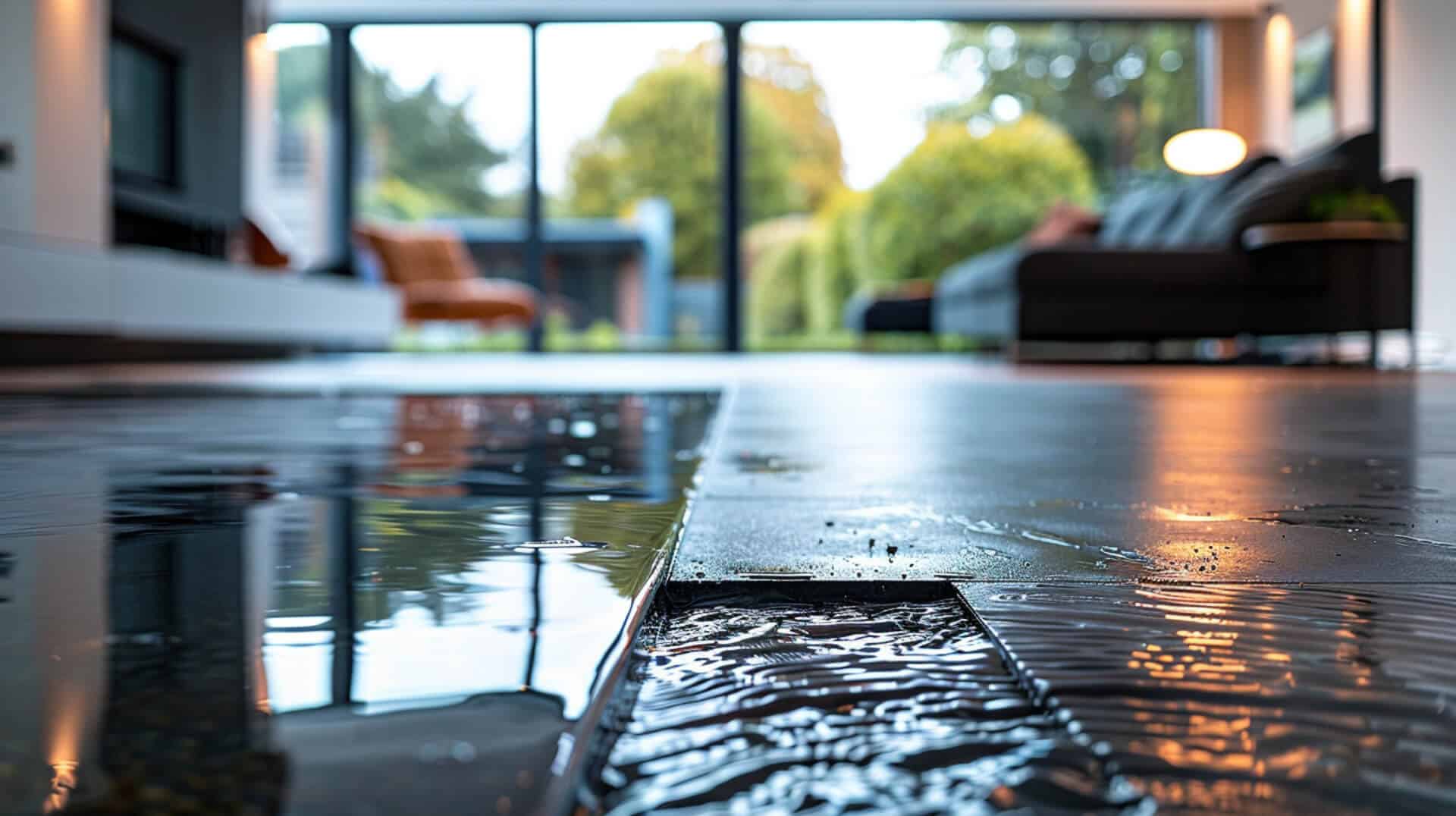
In the digital age, property owners have access to a wealth of online resources that can provide support for drainage issues. These platforms offer a space for sharing experiences, obtaining advice, and accessing emergency services when needed.
Online Resources and Industry Insights
Websites dedicated to plumbing and drainage, such as highwycombeplumbing.com, offer valuable industry insights and project feedback. These resources can guide you through common drainage problems and potential solutions, often illustrated with case studies and expert opinions.
The Role of User Feedback
User feedback on community forums and support platforms can be instrumental in managing drainage systems. Experiences shared by others can help you identify similar issues, understand the effectiveness of different repair methods, and make informed decisions about your own system.
Importance of Privacy on Support Platforms
Privacy considerations are paramount when using online support platforms. Reputable sites ensure the protection of your personal data, allowing you to seek advice and share experiences without compromising your privacy.
Seeking Emergency Services
In the event of a sudden collapse or severe drainage failure, it is crucial to seek emergency services promptly. Many online platforms provide 24-hour emergency callouts, ensuring that professional help is available when you need it most.
Key Takeaways for Managing Drainage System Health
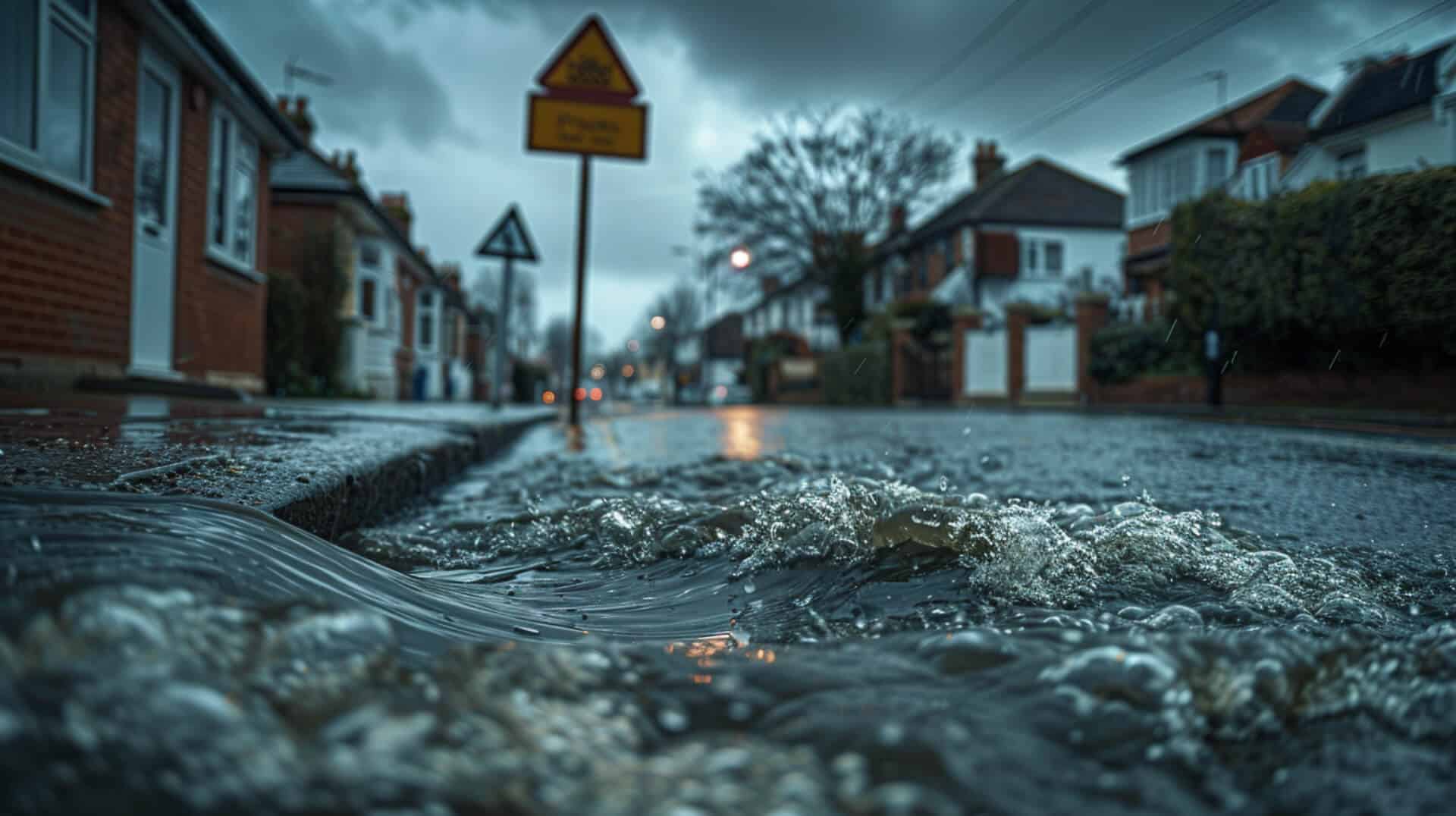
Property owners play a crucial role in maintaining the health of their drainage systems. Recognising the signs of a potential collapse and understanding the importance of a proactive approach are essential in preventing costly repairs and ensuring the longevity of the system.
Integrating Preventive Strategies
Integrating the strategies discussed, such as regular maintenance checks and mindful drain usage, can significantly reduce the likelihood of future drainage issues. By being vigilant and responsive to the early signs of trouble, you can safeguard your property against the inconvenience and expense of a collapsed drain.
The Necessity of a Proactive Approach
A proactive approach to drainage management involves regular inspections, timely repairs, and a commitment to understanding the system’s needs. This approach not only prevents minor issues from becoming major problems but also contributes to the overall well-being of the property’s infrastructure.
Timing for Comprehensive Drainage Reviews
Comprehensive reviews of your drainage system should be conducted periodically, especially after incidents that could impact the system’s integrity, such as severe weather events or nearby construction activities. These reviews can help identify any changes or damages that might compromise the system’s functionality.
By adhering to these guidelines, property owners can effectively manage their drainage systems, ensuring they remain functional and efficient for years to come.
